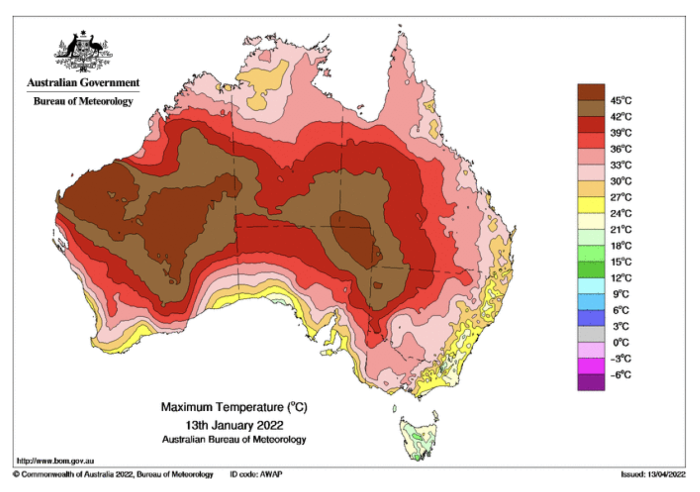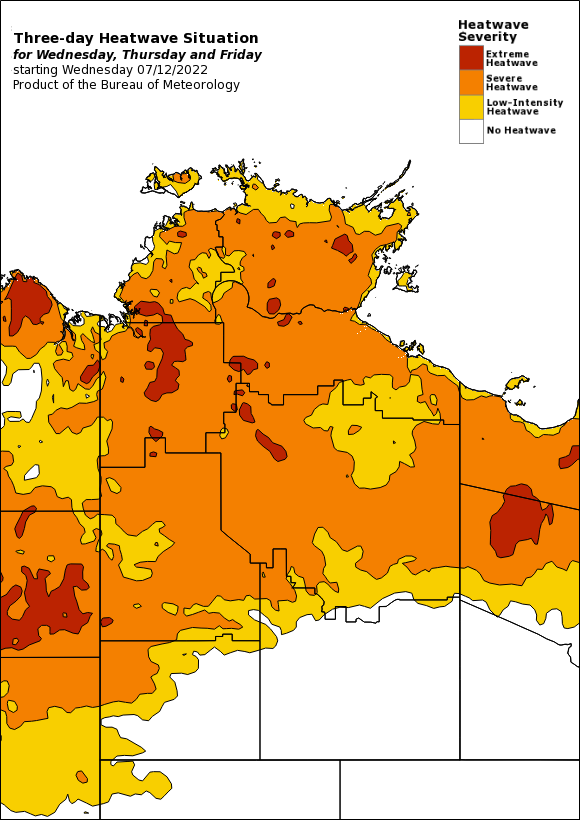As the rainfall records were surpassed in 2022, so too were the extreme heat records. The average temperature over Australia has warmed by 1.47± 0.24°C since 1910. Despite the cooling influence that is usually associated with La Niña events, 2022 was 0.50°C above the 1961–1990 average.

In January, the Pilbara region in Western Australia experienced a record-breaking heatwave, during which the coastal town of Onslow equalled Australia’s highest ever temperature of 50.7°C.

For Victoria and Tasmania as a whole, the January mean minimum temperature was the warmest on record for both states. A very large number of sites across Victoria, Tasmania, and south-east South Australia observed their warmest mean minimum temperature on record for January, with some setting records for their warmest mean minimum temperature on record for any month of the year. Macquarie Island, halfway between New Zealand and Antarctica, had a previous record summer temperature set in 1984 of 14.4 °C. This was surpassed on the 8th and 9th of February 2022 when it reached 17.0 °C and 14.6 °C respectively.
Australia had its third warmest Autumn on record. The Northern Territory experienced the second hottest March and third warmest April on record for average temperature. Maximum temperatures in March were also the warmest on record for areas of the Central Coast and surrounds. July in Queensland was 1.02 °C below the average maximum temperature with many areas in Queensland experiencing their coldest July day on record.
After a year of extreme rain, the year overall ended cooler than average with both mean maximum and mean minimum temperatures below or much lower than average in the eastern states. At the beginning of December, the north of Australia experienced a period of extreme heat with maximum temperature records broken across the Top End. Record highs were recorded in Nhulunbuy, with a high of 38.7°C, Groote Eylandt with a high of 39.8°C and Borroloola, which experienced a high of 44.6°C.
The State of Weather and Climate Extremes 2022
Weather and climate extremes in Antarctica
Extreme events in 2022
Heatwaves in Western Australia
Extreme rainfall and flooding in Queensland and New South Wales February-March 2022
Record low Antarctic sea ice extent in 2022
Simultaneous Antarctic and Arctic heatwaves
Collapse of East Antarctic Conger ice shelf
Hailstorms in Queensland, Victoria and New South Wales
Damaging wind gusts in South Australia and the Northern Territory
© 2023 ARC Centre of Excellence for Climate Extremes
References and acknowledgements available in the PDF version available here.
Materials used are for educational purposes and either author provided or used under fair dealing provisions.
